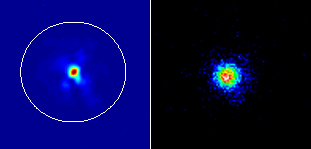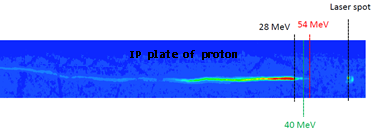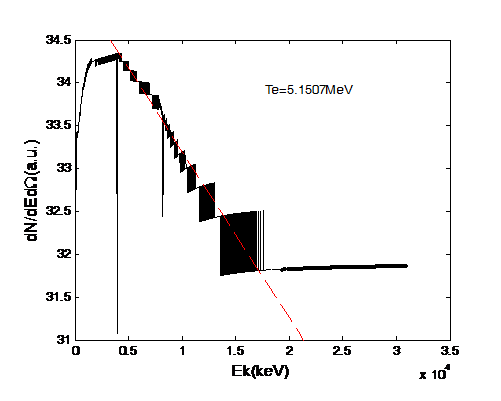More than 50MeV of proton is accelerated on SG-II PW laser
Update time: 2018-02-11
Recently, a physical experiment on laser proton acceleration was carried out on Shenguang II petawatt laser (SG-IIPW for short) constructed by National Laboratory on High Power Laser and Physics. This experiment was implemented by Shanghai Institute of Optics and Fine Mechanics and Laser fusion research center, China Academy of Engineering Physics, and accelerated proton of >50 MeV was captured by Thomson ion spectrometer.
As known to all, such physical experiment requires ultra-short laser pulse with PW-scale peak power, high focused intensity and clean frontier edge. Since 2016, the SG-II team has devoted to improving the beam quality reduced by mosaic of grating (1025×350mm), and the focal spot was minished to smaller than 25μm in diameter. Meanwhile, high precise techniques of controlling target position and laser pointing have been developed. In all, SG-II PW laser has been capable of achieving high intensity laser system serving the physical experiment.
In the laser proton acceleration experiment, laser pulses of 400J in 1ps were shot to a 10μm-thick planar target. Proton acceleration exceeding 50MeV was measured by Thomson ion spectrometer and the temperature of hot electrons from the front of targets read 5.15MeV by electron spectroscopy. This result experimentally demonstrates that SG-II PW facility has delivered laser of power intensity up to 1020 W/cm2 with high contrast.
As an important part of SG-II multi-function integrated laser platform, SG-II PW laser is the first laser facility in China serving the experiments for the researches on inertial confinement fusion. With excellent performance and accurate controlling techniques, SG-II PW laser will provide opportunities for world-wild open experiments and lead the frontier researches in China, such as laser fusion, laboratory astrophysics, laser nuclear physics and so on.

Fig 1 The far field image of SG-II PW laser measured by integrated measurement platform of picosecond laser (Left); the focal spot image captured by X-ray pinhole camera (Right)

Fig 2 Traces of accelerated protons captured by Thomson ion spectrometer in the experiment.

Fig 3 The hot electron from the front surface with fitting curve of temperature measured by electronic spectrometer.


